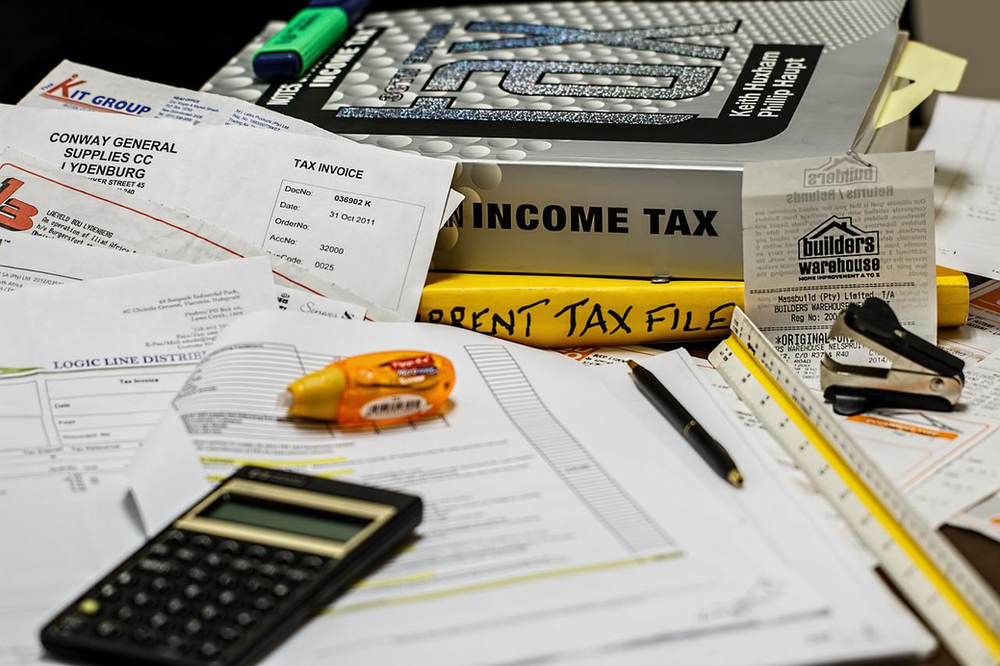You have won a significant triumph in life if you are currently looking to purchase property and are on a house hunt. Everyone knows that purchasing the perfect place is not a simple task, it is among life’s proudest achievements. Probably something you’ve been daydreaming of for years!
Different individuals purchase homes for varying reasons, and these reasons typically have a major impact on their home shortlisting procedure. You could be renting an apartment or maybe your existing home is too small for your needs. Thus, you might desire to buy a home. Or perhaps you’re looking for a second house as an asset for potential profits through rent, selling, or other sources. For a first-timer, purchasing a property can be difficult. And besides, there are several standards, stages, and responsibilities, and you might be concerned about making a costly error or getting conventional loans.
This is your first-time homebuyer guide; a breakdown of what you should think about before you buy, what to anticipate from the actual purchase process, as well as advice to simplify your life post you decide to purchase your first house in an effort to simplify the process and ensure that you gain the most from your purchase.

What to Think About Before Purchasing a Home
To decide if it is the correct moment to buy a home, you must question yourself to understand your home needs if you are considering buying a home. Here are a few of the most crucial factors to think about if you’re a first-time home buyer:
- Budget
- The ratio of debt to income
- Job stability
- Buyers’ psychology
- Industry indicators for the area
- Monthly Mortgage Payments
- Demand and supply
1. Budget

Purchase the home you are confident you can afford. Spending time looking at houses without first knowing how much you can afford is a waste of time. Beyond the purchase price, there are extra expenses to take into account, such as real estate taxes, home insurance, the minimum credit score on the credit report, ongoing repair, and any upgrades you may wish to do. This may not match the cost that mortgage lenders estimate you could handle. Your expected income, interest rates, the kind of mortgage preapproval, and the economy are just a few of the variables. Talk to your mortgage broker to explain the situation to you. The majority of mortgage lenders advise that your overall DTI ratio should not go over 36%. The monthly pre-tax income must not exceed 28% of the total debt, including only your mortgage.
2. The Ratio of debt to income

If you want to borrow money to buy a home, a mortgage lender or multiple lenders will look at your debt-to-income ratio to see if you have enough money to cover the loan payments. Always keep in mind that it’s not just about what the lenders inform you; it also involves how much you currently understand you can afford. You are the best person to judge your financial situation, so make sure the house you buy won’t increase your debt-to-income ratio.
The FHA loan sets a 43% maximum ratio of debt to income as preferable. FHA loan indicates that your monthly accommodation expenses don’t total more than 43% of your take-home down payment. Be mindful that obtaining private mortgage insurance for the house may be more challenging if your monthly costs are more than this sum.
3. Job stability

Economic growth can enhance employer satisfaction. However, this doesn’t imply that individuals lucky enough to have employment do not worry about their job security. How is that possible? One of the most devastating recessions in history is still dragging us down. There is a lot of fear.
That being said, job stability should be the last item on your mind while purchasing a home. Any chances of purchasing a home would almost definitely be destroyed by uncertainty. Perhaps the worst scenario is purchasing a property only to find yourself jobless soon after. Therefore, ensure that your employment is secure before committing to mortgage payments or monthly payments for 30 years.
4. Buyers’ psychology

As obvious as it may seem, a buyer’s psychological condition plays a crucial role in the home buying procedure. That being said, not everyone should become a homeowner. Not everybody is prepared to make a significant commitment required to own a home. A few still aspire to work in their ideal careers or explore the world. Even more essential, perhaps, buying a home entails additional duties that not everybody wants to take on.
5. Industry indicators for the area

Even though it may be annoying, the local market is one of the most important aspects to consider when purchasing a home. When all is said and done, you might not even be offered a choice. It’s possible that the market you’re interested in doesn’t have any houses in your preferred neighborhood or price range. Additionally, some market conditions determine whether or not buying is even a reasonable alternative. In certain markets, owning is now more affordable than leasing, but there are still somewhere renting makes more sense. Everything depends on how the particular market you are interested in is doing right now. Thus, while interest rates are crucial, buying in the right market is just as vital.
6. Monthly Mortgage Payment

As the Federal Reserve strengthens its monetary policy and proceeds toward reducing its balance sheet, numerous people anticipate that mortgage and interest rates will increase. It’s hard to estimate whether and when a significant raise take place, though, given this forecast has been resonating throughout the real estate sector since late 2016. One thing is for sure, purchasing a home will guarantee homeowners a reduced rate compared to previous decades.
7.Demand and Supply

Due to rising housing costs, many prospective buyers are finding it challenging to find a home that they can afford. For the same reason, even present homeowners are choosing against upgrading to newer, bigger, and good housing. Since there are fewer starter houses on the market than ever before, this creates the process even more challenging for first-time buyers. High demand and low supply result from rising rent and housing costs combined with stagnant wages for many. First-time house purchasers may find it more difficult as a result, while investors who possess properties with passive monthly income should gain from the market’s present circumstances.
If there are more homes on the market than the number of potential buyers, it is considered a buyer’s market. Initially, during the recession, after a spike in new house sales, there had been more new houses on the market than developers could sell. As the crisis persisted, more people lost their life savings, the number of foreclosures increased, and house values plummeted; the buyer’s market persisted.
When there are fewer homes for sale than there are potential buyers, the situation is known as a seller’s market. In most parts of the U.S., the period leading to the recession was a thriving seller’s market. Home prices continued to rise due to the numerous buyers frequently placing multiple bids on the same property.
Steps Involved In Buying A Home

Although purchasing a home needs a lot of time and work, following these ten steps can make the process more bearable and enable you to make the best choices.
Step 1: Get a Head Start on your Research
Start to read real estate-related sites, journals, and periodicals as soon as possible. Take note of certain properties you are considering and keep track of how long they are up for sale. Notice any adjustments to the asking price or down payment needed as well. You will get a feel of local housing patterns from this.
Step 2: Determine Your Housing Budget

If the property buyers intend to pay a down payment and carry a reasonable amount of certain other debt, lenders typically advise clients to look for houses that value no more than 3 to 5 times their yearly family income. However, you must base your choice on your individual financial circumstances. Look at home loans if you wish to. A home loan or a conventional loan can be risky but will help you get your dream home. You could also look at FHA loans, VA loans, or other VA loan programs.
Step 3: Get Preapproved and Prequalified for Credit to Finance your Mortgage
You must determine your actual spending limit before you start looking for a home. Getting prequalified for a mortgage insurance premium is the easiest method to go about doing that. You only need to give your mortgage banker certain financial data, such as your earnings and the number of investments and savings you possess, in order to get pre-qualified.
After reviewing this data, your lender will let you know how much money they can lend you. This will reveal the range of prices for the houses you ought to consider. Next, you can apply for preapproval for credit, which requires submitting your financial records so your lender can check your credit and financial standing.
Step 4: Finding the Ideal Real Estate Agent
When purchasing or selling a house, realtors are crucial allies. You can get useful info from a real estate agent about houses and neighborhoods that aren’t readily available to the general public. Their local knowledge, bargaining abilities, and expertise in the community you wish to live in can all be very helpful. The best part is that using an agent won’t cost you anything because they are paid from the fee received from the home seller.

Additionally, it’s crucial to assess the area and take note of details like:
- Are the other houses on the street kept up well?
- The amount of traffic on the street?
- Are there enough spots on the street for your valued guests?
- Are nearby attractions like parks, cafes, retail malls, and public transportation easily accessible?
Spend as much time as necessary locating the ideal residence. After that, engage with your agent of real estate to discuss a reasonable offer that is based on the price of similar houses in the same area. The house will enter escrow, or the time it takes to finish all of the remaining steps after you and the seller have agreed on a price.
Step 6: Get a Home Inspection
Normally, purchase agreements are subject to a home inspection to look for indications of structural deterioration or items that might need repairs. Within a few days of the seller accepting your offer, your real estate broker will often assist you in setting up the inspection. If the inspection reveals serious harm, this contingency safeguards you by providing you the opportunity to negotiate your offer or remove it without incurring any fees. The house inspector will give you and the seller a report on their findings. After that, you can choose if you wish to request repairs frBegin looking at properties in your price bracket. Consider making notes on every house you visit. Many homes will be visible to you! It can be challenging to recall every detail about them, therefore, you may want to record a movie or snap photos of each property to aid in your memory.
Make sure to examine each house’s finer points. For instance:
- Use the shower to check the piping and gauge the strength of the water pressure and the amount of time it takes to get hot water.
- Switches can be tested by being turned on and off.
- Check the doors and windows for functionality by opening and closing them.
om the seller before finalizing the deal.
Step 8: Obtain a Home Appraisal
The worth of the home you are purchasing will be estimated independently by an appraiser, thanks to arrangements made by lenders. The appraiser is a part of a separate business and has no official relationship with the lender. The evaluation will inform all stakeholders that you are making fair closing costs for the house and use closing cost assistance programs.
Step 9: Arrange the Documentation
As you might expect, purchasing a home involves a lot of documentation. In order to ensure that the seller is the legitimate owner of the home you are purchasing, your lender will set up a title firm to manage all of the necessary documentation.
Step 10: Complete the Purchase

You will sign each of the papers necessary to finish the transaction, particularly your loan documentation and closing costs. After the paperwork is given back to the lender, it normally takes a few days for your loan to be funded. You are prepared to move into your new house as soon as the cheque is given to the seller!
Conclusion
The very first factor you experience when searching for a home is individuals who have a lot of viewpoints. It’s essential to overlook everyone but those who offer sensible counsel. Most of the crucial information about the modern home buying method is probably unknown to friends and relatives who have only ever purchased one home. In this article, we dived into factors to keep in mind when buying a home for the first time as well as the ten essential steps that form the home-buying process.








